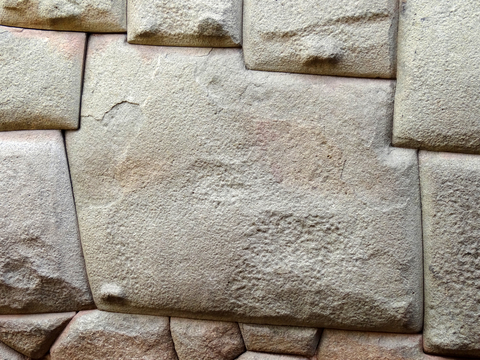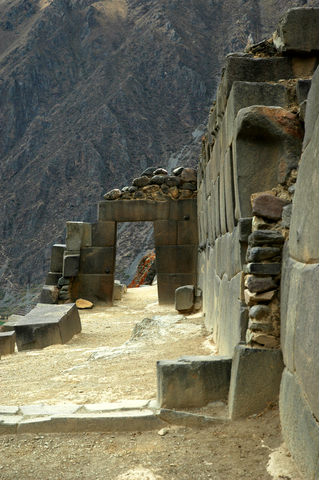Cusco
The department of Cusco is located in the southeast of the country, covering mountains and jungle areas. Bordered by Arequipa, Puno, Apurimac, Junin, Ucayali and Madre de Dios. In the highlands, the climate has temperate cold nights and mornings. The seasons are divided into rainy period, December to March, and the dry period, April to November. The average annual temperature is 11 ° C, while in the jungle areas, it exceeds 25 ° C.
It has an area of 76.329 square kilometers and a population of over one million inhabitants. Its capital is the city of Cusco (3360 meters) and known as the "Archaeological Capital of America".
Access routes
There are daily flights to Cusco from Lima and other cities. Velasco Astete airport in Cusco is 3 km from the city center and there are taxi and bus services.
From Lima, there is a land route via the Pan American Highway and then south through Arequipa to Cusco (1659 km or 28 hours of travel, approx.). The other route, not recommended in rainy season is via the mountains, passing through Ayacucho.
There is a daily train service from Arequipa, via Juliaca (Puno), a trip of approximately 20 hours. From Puno is 10 hours. The highest point of this route is La Raya at 4313 meters between Cusco and Juliaca.

Brief History
Oral traditions relate that the city of Cusco, during the eleventh and twelfth centuries AD, was founded by the legendary figure of the Inca Manco Capac, who emerged from Lake Titicaca (Puno) to teach men how to cultivate the land.
Cusco, the sacred city and former capital of the Inca Empire or Tawantinsuyu in Quechua, was the center of government of four large regions of the empire, which extended over part of the modern countries of Ecuador, Colombia, Peru, Bolivia, Argentina and Chile.
Their civilization was an admirable example of social and political organization and archeologists have shown that they had a sophisticated understanding of mathematics, astronomy, architecture, hydraulic engineering, medicine, and particularly, agriculture.
On March 23rd, 1534, Captain Francisco Pizarro, after defeating the Incas, founded a city which was built on the foundations of the Incan city of Cusco using Incan stones to build churches and other buildings. The Spanish rule lasted for three centuries.
Since 1825, with the Republic, the wonders of Cusco's Incan culture began to re-emerge. With the discovery of Machu Picchu, by Hiram Bingham in 1911, its importance as a cultural centre was undeniable.

Main Attractions of the Capital
The Plaza de Armas, which is also known as Huacaypata, means "cry" or "lament".
Tradition says it was designed by the founder Manco Capac and was the symbolic center of the empire. Here Tupac Amaru II, his wife Micaela Bastidas and their sons, were executed after trying to raise a rebellion against Spanish oppression.
Sacsayhuaman fortress, a few meters from the center, has enormous walls of monumental stones built in a zigzag formation on three levels each having an average of 360 m in length. There are stones up to 9 m long and 5 m wide.
Tambomachay, known as the "Inca Baths", and which through its stairways, there are crystalline water, and claims have been made that the water is blessed.
The Red Fortress of Puca Pucara has fortifications formed by terraces, stairways, underground passages, turrets, niches and platforms.
Kencco Amphitheatre, an ancient Inca shrine also was built in stone. There are passages, canals and stairways with stone engravings representing the sacred Puma.
Barrio de San Blas, is a few blocks from the Plaza de Armas. This typical district, houses the workshops of the most important families of artisans from Cusco, as the Mendivil, Olave and Mérida. In the church, there is a famous pulpit, beautifully carved from one piece of wood almost 400 years ago.
Koricancha, the Sun Temple was built during the reign of the Incan Pachacutec. On the site of this temple, the Spanish erected the church of Santo Domingo. Recent discoveries have uncovered Incan walls and provide a glimpse of how important it was for religious Incans.
Other churches and convents in the area include; the Cathedral, San Francisco, Santo Domingo, Santa Catalina, San Pedro, Santa Clara, The Company, San Cristobal and La Merced. San Merced holds the famous monstrance which is made of solid gold. It was built in 1720, weighs 22 kilos and is encrusted with 1,805 diamonds and another 615 precious stones such as rubies, topazes and emeralds.
Typical houses that are highlights include; Four Busts House, the House of the Marquis of San Juan de Buena Vista and Rocafuerte, The Mansion House is the birthplace of Inca Garcilaso de la Vega and the Palacio del Almirante

Other Attractions in the Department
MACHU PICCHU
It is considered the seventh wonder of the world and demonstrates the wisdom of the Incan culture, a they were able to build a fortress of gigantic stones to fit perfectly in a place.
Located 2,430 meters above sea level and in the midst of a tropical mountain forest, Machu Picchu was probably the most amazing urban creation of the Inca Empire. Its giant walls, terraces and ramps seem as if they have been cut naturally in the continuous rock escarpments. The natural setting, on the eastern slopes of the Andes, encompasses the upper Amazon basin with its rich diversity of flora and fauna.
"Without making a judgement as to their purpose, several individual quarters may be noted in the ruins of Machu Picchu: a quarter “of the Farmers" near the colossal terraces whose slopes were cultivated and transformed into hanging gardens; and an “industrial" quarter; a “royal" quarter and a “religious" quarter. At Machu Picchu, the Inca architecture reveals itself in all of its force with the titanic earthen works which multiplied the platforms, the leveled rocky relief, constructed ramps and stairways, and literally sculpted the mountain whose cyclopean constructions appear to be a prolongation of nature" (Copied from
http://whc.unesco.org/en/list/274)
Sacred Valley of the Incas is an unforgettable journey through the most famous Cuzco valley with the river Urubamba or Vilcanota as your companion. Touring the circuit one can visit the towns of Pisac, Yucay, Urubamba, Ollantaytambo and Chinchero. In each of them there are pre-Hispanic archaeological remains, which were used by the Incas as strengths and resting places. The Chinchero Sunday fairs are famous for their textiles.
Oropesa, is known as the "Land of the Bread". Its inhabitants are engaged in making home-made bread with various shapes and flavors.
Piquillacta, is a pre-Inca archaeological discovery covering some 63 hectares. Geometrically shaped, it is surrounded by terraces and walls that enclose the original high buildings. It served for defense and food storage.
Andahuaylillas, famous for its church, was built in 1580 and is called the "Sistine Chapel of America". Its simple exterior contrasts with the baroque interior that displays all its art; its gilded altars, murals, paintings and frescoes.



